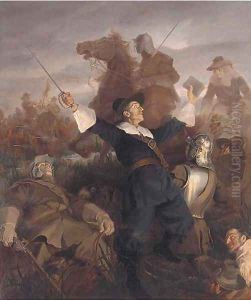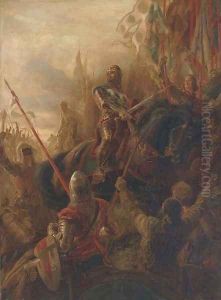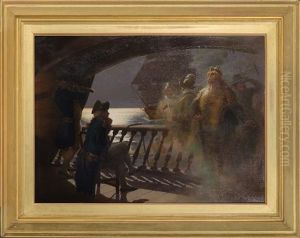Arthur Twidle Paintings
Arthur Twidle was an English artist and illustrator best known for his prolific work during the late 19th and early 20th centuries. Born in 1865 in the United Kingdom, Twidle developed his artistic skills at an early age and went on to study at the Lambeth School of Art in London.
Twidle's work was characterized by its detailed and vivid imagery, often reflecting the popular tastes and interests of the Edwardian era. He became well-regarded for his ability to capture the essence of a narrative in a single illustration, a skill that made him a sought-after illustrator for various magazines and books of the time.
Throughout his career, Twidle contributed many illustrations to the Strand Magazine, which was one of the most popular periodicals in Britain. He is perhaps best remembered for his illustrations that accompanied the stories of Arthur Conan Doyle, including the Sherlock Holmes series. His depictions of the iconic detective and his companion Dr. Watson helped to shape the visual identity of these characters in the public's imagination.
In addition to his work on the Strand Magazine, Twidle illustrated numerous books, ranging from children's literature to adventure novels. His illustrations were known for their dynamic compositions and attention to detail, often bringing the stories to life in a way that complemented and enhanced the written narrative.
Arthur Twidle's career spanned an era when illustration played a key role in storytelling, particularly in the context of printed media. Despite the advent of photography, Twidle's work remained in demand due to his ability to convey emotion and atmosphere in a way that photographs of the time could not.
Twidle passed away in 1936, leaving behind a legacy of work that continues to be appreciated by enthusiasts of illustration and fans of the literary works he helped visualize. His contributions to the field of illustration have ensured that his art remains a significant part of the visual culture associated with the late Victorian and Edwardian periods.


